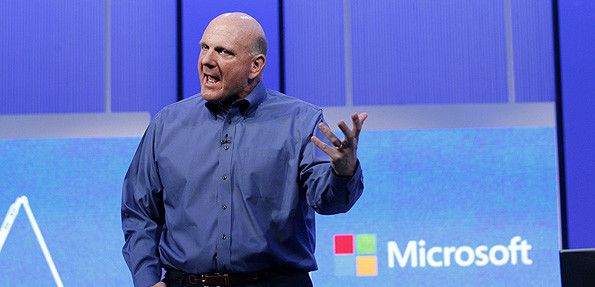微软重组“reorganize” and “reshuffle”
爱思英语编者按:一连串的传闻之后,微软CEO史蒂夫·鲍尔默(Steve Ballmer)终于在7月12日宣布了微软的重组计划。这份旨在提高微软灵活性以及反应速度的计划,重新划分了微软高官们的权利范围,但能否就此破解微软缺席移动时代的深层危机问题,仍然是个未知数。
重组计划
过去两周,微软即将大规模重组的消息被传得沸沸扬扬。终于在7月12日,由鲍尔默亲自宣布了这一酝酿多时的重组计划。如果你有时间看看鲍尔默发给员工的长篇内部备忘录,就会发现,这绝对是微软历史上规模最为庞大的一次重组计划。
根据最新的重组计划,微软将原有的8个业务部门简化为4个部门,分别为:操作系统部门、应用和服务部门、云计算和企业部门,以及设备和工作室部门。
具体而言:操作系统部门由此前Windows Phone工程开发主管特里·迈尔森(Terry Myerson)负责,该部门对微软所有主要操作系统,包括Windows、Windows Phone,以及Xbox的软件进行了整合;
新的设备及工作室部门负责人是原来的Windows部门负责任人朱莉·拉尔森-格林(Julie Larson-Green),该部门将包括Xbox硬件、Surface系列平板电脑产品、硬件配件和游戏等业务;
作为新的云计算和企业部门负责人,塞亚·纳德拉(Satya Nadella)将负责微软的数据中心网络和在线服务业务、以及Windows Azure云计算平台;
应用和服务部门则由原微软在线服务业务主管陆奇领导,具体业务主要包括效率、通信、搜索以及其他信息类别的应用程序和服务,包括Office、企业社交平台Yammer、Skype和必应搜索等。

Microsoft
Reorganise and reshuffle
FOR some time, Steve Ballmer, Microsoft’s chief executive, has been saying that the software giant needs to think of itself as a “devices and services” company. On July 11th he set out in an e-mail to staff and a lengthy memo, both published on the company’s website, what this means for Microsoft’s internal organisation. Its businesses have been regrouped and just about all its senior managers reshuffled. Quite what it might mean for shareholders and for the eventual succession to Mr Ballmer is, however, not yet evident.
Hitherto Microsoft has had five largely separate divisions. The Windows division houses the operating system in most of the world’s PCs and these days a few of its smartphones and tablets too (and accounted for about 25% of revenue in the first nine months of this financial year). Alongside this are the server and tools division (also about 25%); online services (4%), business (30%) and entertainment and devices, including the Xbox games console (14%).
Mr Ballmer seems to have decided that this system has lacked co-ordination. “We are rallying behind a single strategy as one company,” he wrote to his staff, “not a collection of divisional strategies.” That is what Microsoft has had until now. The Windows division, for example, was notorious for ploughing its own furrow—one reason, some think, for the departure of Steven Sinofsky, its head, late last year. The structure has not served Microsoft well as the world has moved from desktop and laptop personal computers, where the company made its money, into mobile devices, where it has struggled, and the cloud. Some technologies, such as operating systems and cloud infrastructure, have been spread across divisions. “We will see our product line holistically,” Mr Ballmer wrote, “not as a set of islands.”
So the new arrangement has a more horizontal look, with four “engineering groups” organised on functional lines. All the operating systems, whether for PCs, mobile devices or the cloud, will be in one group. Devices will be in another. A third, applications, covers core technologies in search (ie, the Bing search engine) and productivity (Office and so forth). And the cloud group will look after data centres, databases and the needs of big companies.
No one knows whether the realigned Microsoft will be a nimbler Microsoft until results start to flow. (The company is due to report fourth-quarter figures, presumably on the old lines, on July 18th.) Investors will want to be able, as far as they can, to compare the old and the new—for instance, on the so far disappointing uptake of Windows 8, the newish operating system for PCs, tablets and smartphones. They may like a little more clarity on something else, too: who might succeed Mr Ballmer, especially if the reorganisation is a flop. On that, despite all the moves among Microsoft’s top brass (and a couple of prominent departures) no one is any the wiser.